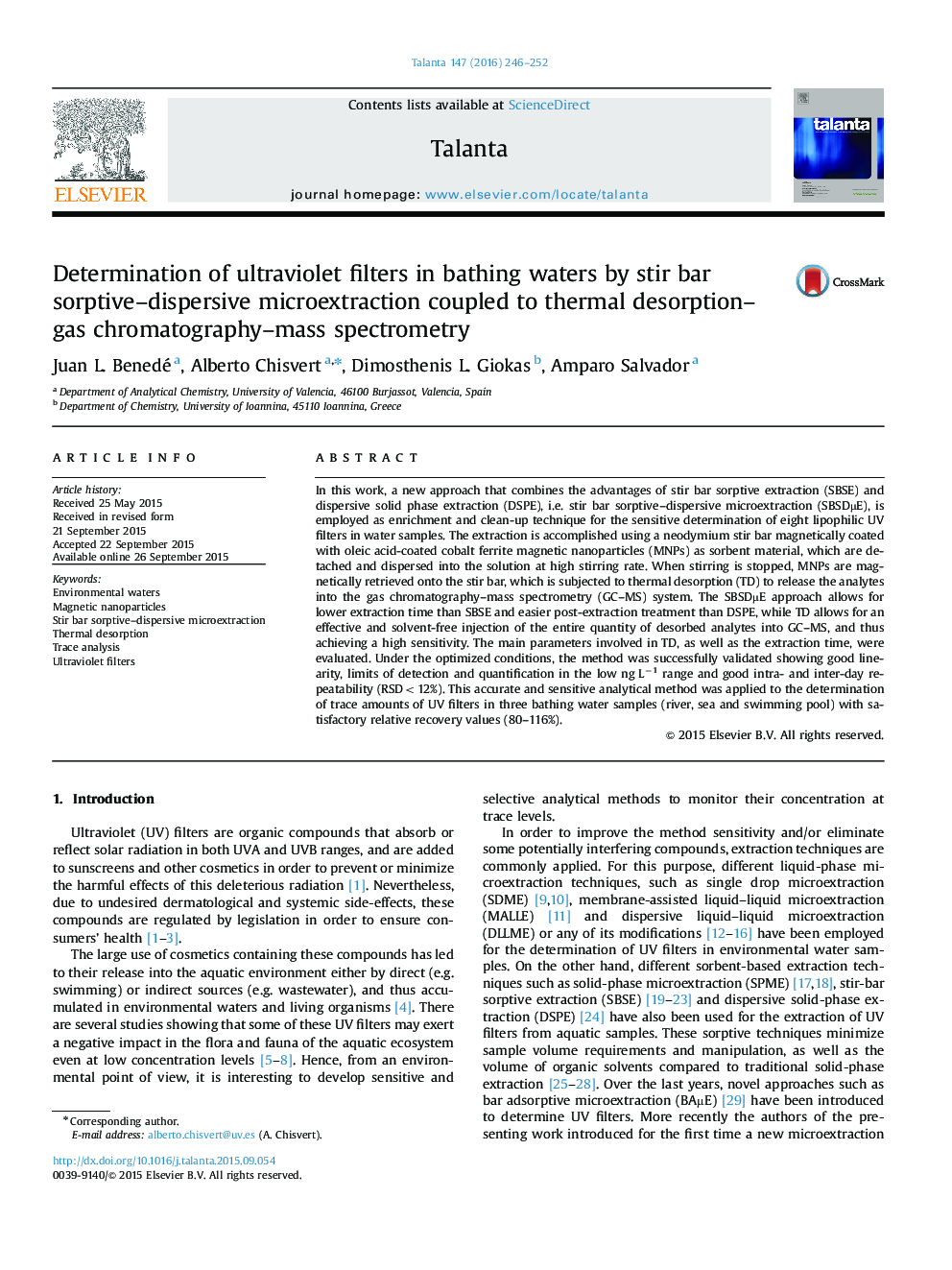| Article ID | Journal | Published Year | Pages | File Type |
|---|---|---|---|---|
| 1242751 | Talanta | 2016 | 7 Pages |
•A new analytical method has been developed to determine UV filters in water samples.•Analytes are extracted by using SBSDμE and desorbed by TD directly coupled to GC–MS.•SBSDμE combines the advantages of SBSE and DSPE into a single approach.•TD allows high sensitive, effective and solvent-free desorption step.•The method has been developed and validated obtaining good analytical features.
In this work, a new approach that combines the advantages of stir bar sorptive extraction (SBSE) and dispersive solid phase extraction (DSPE), i.e. stir bar sorptive–dispersive microextraction (SBSDµE), is employed as enrichment and clean-up technique for the sensitive determination of eight lipophilic UV filters in water samples. The extraction is accomplished using a neodymium stir bar magnetically coated with oleic acid-coated cobalt ferrite magnetic nanoparticles (MNPs) as sorbent material, which are detached and dispersed into the solution at high stirring rate. When stirring is stopped, MNPs are magnetically retrieved onto the stir bar, which is subjected to thermal desorption (TD) to release the analytes into the gas chromatography–mass spectrometry (GC–MS) system. The SBSDµE approach allows for lower extraction time than SBSE and easier post-extraction treatment than DSPE, while TD allows for an effective and solvent-free injection of the entire quantity of desorbed analytes into GC–MS, and thus achieving a high sensitivity. The main parameters involved in TD, as well as the extraction time, were evaluated. Under the optimized conditions, the method was successfully validated showing good linearity, limits of detection and quantification in the low ng L−1 range and good intra- and inter-day repeatability (RSD<12%). This accurate and sensitive analytical method was applied to the determination of trace amounts of UV filters in three bathing water samples (river, sea and swimming pool) with satisfactory relative recovery values (80–116%).
Graphical abstractFigure optionsDownload full-size imageDownload as PowerPoint slide
